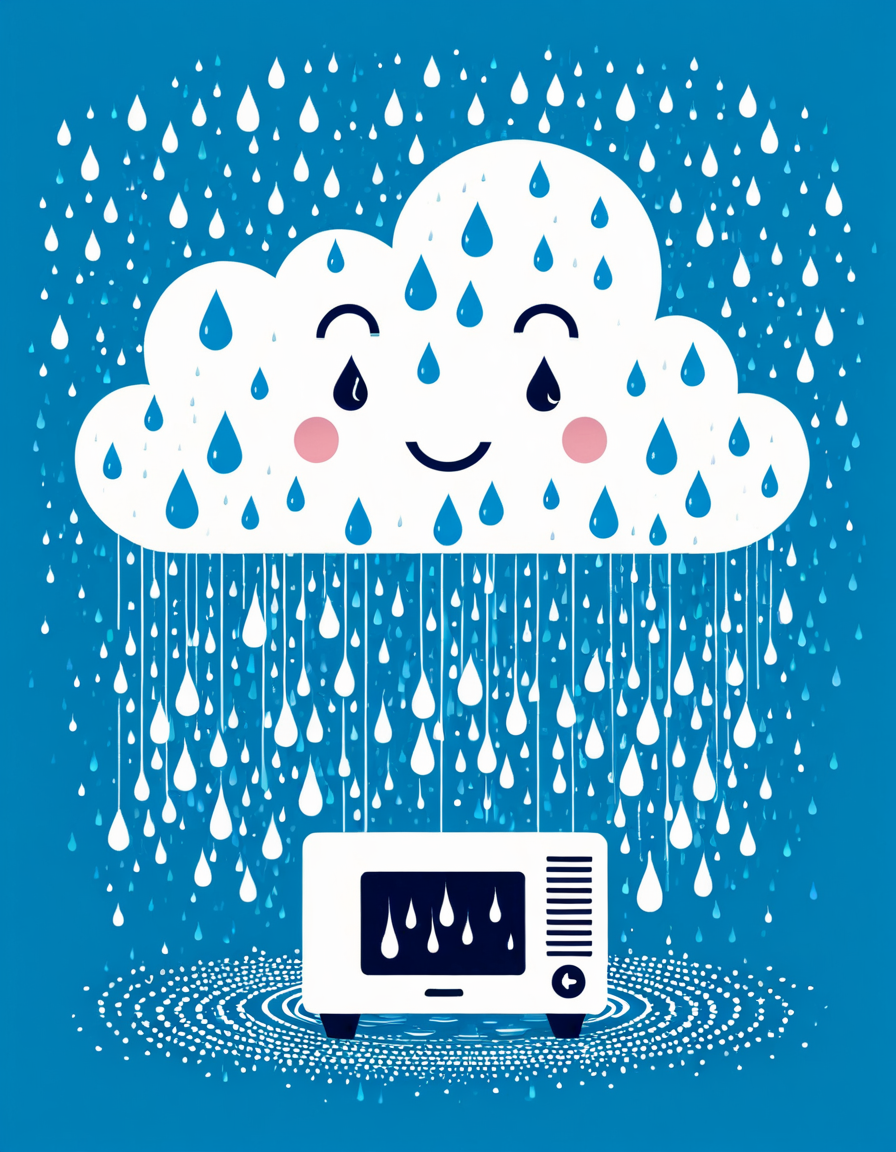Intermittent internet connections can be frustrating, right? You click on a link, your heart races in anticipation, and then—bam!—the dreaded 500 error shows up on your screen like an uninvited guest. This internal server error encroaches upon our online experience, often yielding nothing but confusion for users and panic for webmasters. In this article, we’ll dissect the 500 error: what it means, why it happens, and how to unwind the knots causing your website to act up. Grab a comfy chair; we’re diving deep!

Understanding the 500 Error: Unpacking Server-Side Problems
The 500 error, officially dubbed “Internal Server Error,” usually points to a snag on the web server hosting a website. Unlike client-side errors that suggest a hiccup with your device or connection, the 500 error highlights server misconfigurations, code failures, or even memory overloads. So, what does that mean for the average user? It’s a wall with no clue on the other side.
To comprehend the full scope of a 500 error, we’ll need to look at various aspects—different underlying symptoms, server architecture, and potential solutions. Society today leans heavily on web presence, and when that presence falters due to server errors, it can impact businesses significantly. Imagine a scenario where an organization sprawling over platforms like Msmbc suffers downtime during peak hours—chaos ensues! Thus, being armed with knowledge is key.

Top 7 Causes of 500 Errors and How to Resolve Them
A 500 error can stem from many sources. Let’s break down the top seven culprits and how to patch things up!
1. Server Code Errors
One notorious instigator of the 500 error is a bug lurking in server-side code, making server behavior as unpredictable as a cat in a room full of laser pointers. You might find this particularly true for WordPress sites that stumble after a plugin update that causes a ruckus with existing code.
Resolution: The best move? Conduct comprehensive testing of the code in a staging environment. If an update triggers chaos, roll it back to a prior version—think of it as a “reset” button.
2. Server Overload
Recall the last time you tried to squeeze into a popular restaurant and were told to wait? Just like that scenario, server overload occurs when too many visitors pour in at once, leaving the server gasping for resources. Hosting platforms like Bluehost or GoDaddy often see this happen during sudden traffic spikes.
Resolution: To kick things up a notch, consider upgrading your hosting plan or utilizing Content Delivery Networks (CDNs) like Cloudflare to distribute the load more smoothly.
3. File Permissions Issues
Ever feel like you’re knocking on a door that’s locked? Inappropriate file permissions on server directories can lead to access denials, culminating into the infamous 500 error. Many users unknowingly alter permissions, resulting in locked directories.
Resolution: Review file permissions to ensure they align with server needs—typically, directories should be set to 755 and files to 644. Have a friend check your locks!
4. Missing .htaccess File
Think of the .htaccess file as your website’s instruction booklet; if it’s missing or misconfigured, the 500 error could rear its ugly head. This happens commonly among shared hosting users with cPanel, particularly if the file is modified or deleted in error.
Resolution: Restoring the default .htaccess file or correcting configurations can clear up the mess. Regularly backing up this file is also a solid strategy.
5. Exhausted PHP Memory Limit
Reaching the limits can have dire consequences—especially when a website’s PHP memory is maxed out due to numerous plugins and themes. This proves troublesome, particularly on shared hosting plans.
Resolution: Bump up the PHP memory limit through the php.ini file or by directly accessing your control panel settings.
6. Dependency Failures
Picture a scenario akin to a string of dominoes: if one falls, others follow. Web applications often rely on third-party services, and if those services crash, the 500 error isn’t far behind. This was vividly observed when payment processing services momentarily went offline, sending merchants into a tailspin.
Resolution: Implement error handling strategically to prevent your server from crashing completely. Always have a Plan B—maybe in your back pocket!
7. Compatibility Issues with Recent Updates
Updates can be both blessings and curses. A shiny new update for platforms like Shopify or Magento might play havoc with installed software, potentially disrupting server communication and leading to 500 errors.
Resolution: Conduct compatibility tests before adopting any new software updates. Stick to a routine of systematic checks—you wouldn’t go swim in unfamiliar waters without scouting the area first!

Differentiating 500, 503, and 403 Errors: What You Need to Know
Hey, let’s not get too lost in the weeds! Along with the 500 error, two other commonly confused server errors are the 503 and 403 errors. Understanding these differences is vital for efficient diagnosis.
The 503 Error
A 503 error signals that the server can’t currently handle requests—possibly due to temporary overload or maintenance. This differs from the 500 error, which indicates an internal problem. It’s like the server saying, “I’m busy; try back later!”
The 403 Error
On the flip side, a 403 error indicates forbidden access. Users are denied entry to a resource, typically due to permissions being set incorrectly, despite the server itself running just fine. Being locked out is never fun!

Analyzing Server-Side Data Accuracy: Accuracy vs. Precision
When delving into server issues, the concepts of accuracy vs. precision are crucial. Precision in server management refers to the details in analyzing performance and errors, whereas accuracy relates to correctly identifying and rectifying faults.
For example, utilizing platforms like HSE Skyward or Score808 can yield precise data on server health. However, if misinterpretations lead to misguided actions, the intended clarity in rectifying a 500 error gets muddied.

Innovative Wrap-Up
The ongoing struggle against 500 errors highlights the thunderous importance of proactive management. By understanding the unique aspects of these server issues, implementing systematic solutions, and keeping abreast with emerging technologies, webmasters can enhance server reliability and performance. In our fast-paced, digital landscape, ensuring seamless user experiences despite server quirks is paramount.
Next time you see that pesky 500 error, remember you’re armed with knowledge. Whether you’re troubleshooting at work or helping a friend, the keys to error resolution lie in your hands. Knowledge is power, and in our tech-driven world, it’s a necessary tool to wield in the face of 500 errors, intricate servers, and connectivity issues. Now, get out there and navigate the digital seas with confidence! Don’t let a little error hold you back!
500 Error: Fun Trivia and Interesting Facts
What’s in a 500 Error?
You’ve probably come across the infamous 500 error at some point while browsing online. But did you know that this generic message can pop up for a multitude of reasons? It doesn’t pinpoint a specific issue, which can be frustrating. Much like trying to find what’s good at Mr . Fit sumare, troubleshooting this error involves digging deeper to isolate the problem. Developers often have to comb through log files and test server configurations to tackle the issue.
And let’s not forget that a 500 error can be more than just annoying; it might even stifle your productivity, like trying to eat healthy while daydreaming about those delicious apricot Seeds you saw online. So next time this error pops up, reflect on the digital puzzles awaiting resolution, and take a mini-break to let your mind wander—perhaps even about how you can do What You want To do What You want To!
The Human Side of Errors
Interestingly, the 500 error isn’t just a tech issue; it can make web users feel a bit helpless. This mirrors how dealing with Foliculitis can often draw a parallel to wanting to fix a problem that you can’t directly see. Both require some patience and understanding, whether it’s getting your website back on track or battling skin irritations.
Fun fact: Did you know that some luxury hotels, like the Ojai Valley inn, invest in top-notch server solutions to minimize downtime? That kind of commitment keeps guests happy and error-free. Imagine this: a blissful weekend getting away without a pop-up error interrupting your spa day!
Interconnected Web of Errors and Solutions
To add some flavor to your knowledge pot, did you know the nuances of server management can feel a bit like a spelling bee? Success is all about getting the letters in the right order, just like hunting for solutions to a persistent 500 error. Be it finding spelling bee Hints or understanding server logs, clarity is key. Each piece of information contributes to the bigger picture, much like a diverse meal blends flavors together—all the way from savory dishes to scrumptious treats.
These technical glitches can even trigger a sense of camaraderie among web developers, reminiscent of the connections you make in communities, like the one at みなと羽琉. So the next time you see a 500 error, remember there’s a whole tech world swarming around solutions, and don’t be afraid to dive into the fray—just don’t forget to keep an eye on your rhino security deposit while you’re at it!

























